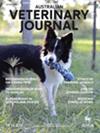Hospital safety culture in Australia: a nationwide survey using a safety attitude questionnaire
Abstract
Background
Patient safety culture is increasingly recognised as important in veterinary medicine; however, there is limited understanding of how safety attitudes vary across professional roles within Australian veterinary practices. This study investigates the perceptions of safety culture, focusing on its importance for enhancing workplace well-being and patient safety.
Methods
A cross-sectional survey was conducted among 669 Australian veterinary care professionals across diverse practice types, roles and locations. The Safety Attitudes Questionnaire (SAQ) assessed six dimensions: teamwork climate, safety climate, job satisfaction, stress recognition, perceptions of management and working conditions. Responses were collected on a Likert scale and analysed to compare perceptions across professional roles.
Results
Overall positive attitudes were highest for Stress Recognition (63.4%) and lowest for Working Conditions (25.4%). Managers reported significantly more positive attitudes than veterinarians and nurses across multiple dimensions, including teamwork climate (χ2 = 29.1, P < 0.001) and perceptions of management (χ2 = 31.1, P < 0.001). Academic clinicians reported notably low attitudes, with only 13.3% scoring positively for safety climate and none for perceptions of management. Comparisons between veterinarians and nurses revealed significant differences in stress recognition (Z = −6.0, P < 0.001), perceptions of management (Z = −2.1, P = 0.04) and working conditions (Z = −2.4, P = 0.01), with veterinarians consistently reporting higher scores.
Conclusions
Significant variability exists in safety attitudes across professional roles, with managers reporting the most favourable perceptions and academic clinicians and nurses reporting the least. Veterinarians also scored higher than veterinary nurses for several dimensions.


 求助内容:
求助内容: 应助结果提醒方式:
应助结果提醒方式:


